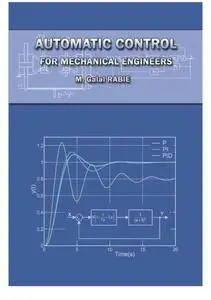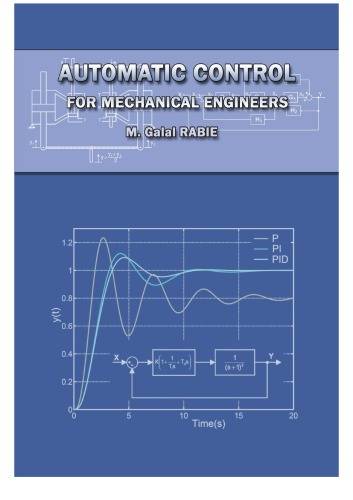Galal Rabie, "Automatic Control for Mechanical Engineers"
2010 | ISBN-10: 9771798693, 9789771798699 | 176 pages | PDF | 21 MB
2010 | ISBN-10: 9771798693, 9789771798699 | 176 pages | PDF | 21 MB
PREFACE
Automatic control plays an important role in the advance of engineering and science.
It is of extreme importance in most of the engineering fields; such as the aerospace engineering, chemical engineering, robotic systems, automotive and mobile equipment engineering as well as manufacturing and industrial processes. Automatic control provides the means of understanding the problems of stability and precision of dynamic systems. Actually most engineers must have good understanding of this field.
The majority of textbooks on automatic control are most appropriated for electrical engineers. The main problem in designing and analyzing a control loop for nonelectrical systems normally arises when deducing adequate mathematical model for the system. Generally, the components cannot readily be represented by simple discrete ideal elements. The classical approach based on the transfer function and associated techniques of analysis is more easily comprehended and related to practice by the beginners than is the modern control theory. Therefore this text is prepared for the mechanical engineering students. It deals with the basics of linear control theory. The text includes simple examples enabling applicants to understand the problems of dynamic systems accuracy and stability. The text includes examples and exercises that facilitate the comprehension of the control theory, especially for the mechanical engineering students. The text is arranged in ten chapters dealing with the following topics:
1. An introduction giving the basic definitions and methods of system representation, Chapter 1.
2. A revision of selected topics from mathematics, Chapter 2.
3. Deduction of the transfer functions using mathematical models, block diagrams and signal flow graphs, Chapters 3, 4 & 5.
4. Analysis of the transient and frequency responses of the system and how does the response vary with the form of transfer function and the input excitation. The text discusses also how a transfer function can be determined by practical testing of a system, Chapters 6 & 7.
5. Analysis of the accuracy and stability of the feedback system, Chapter 8.
6. Root locus analysis, Chapter 9.
7. Improvement of the system stability by introducing and designing different types of compensators, mainly the P, PI & PID controllers, Chapter 10.
I am indebted to my colleague Prof. Dr. Gamal Ahmed El-Sheikh, for his objective comments on the whole text.
THE AUTHOR



